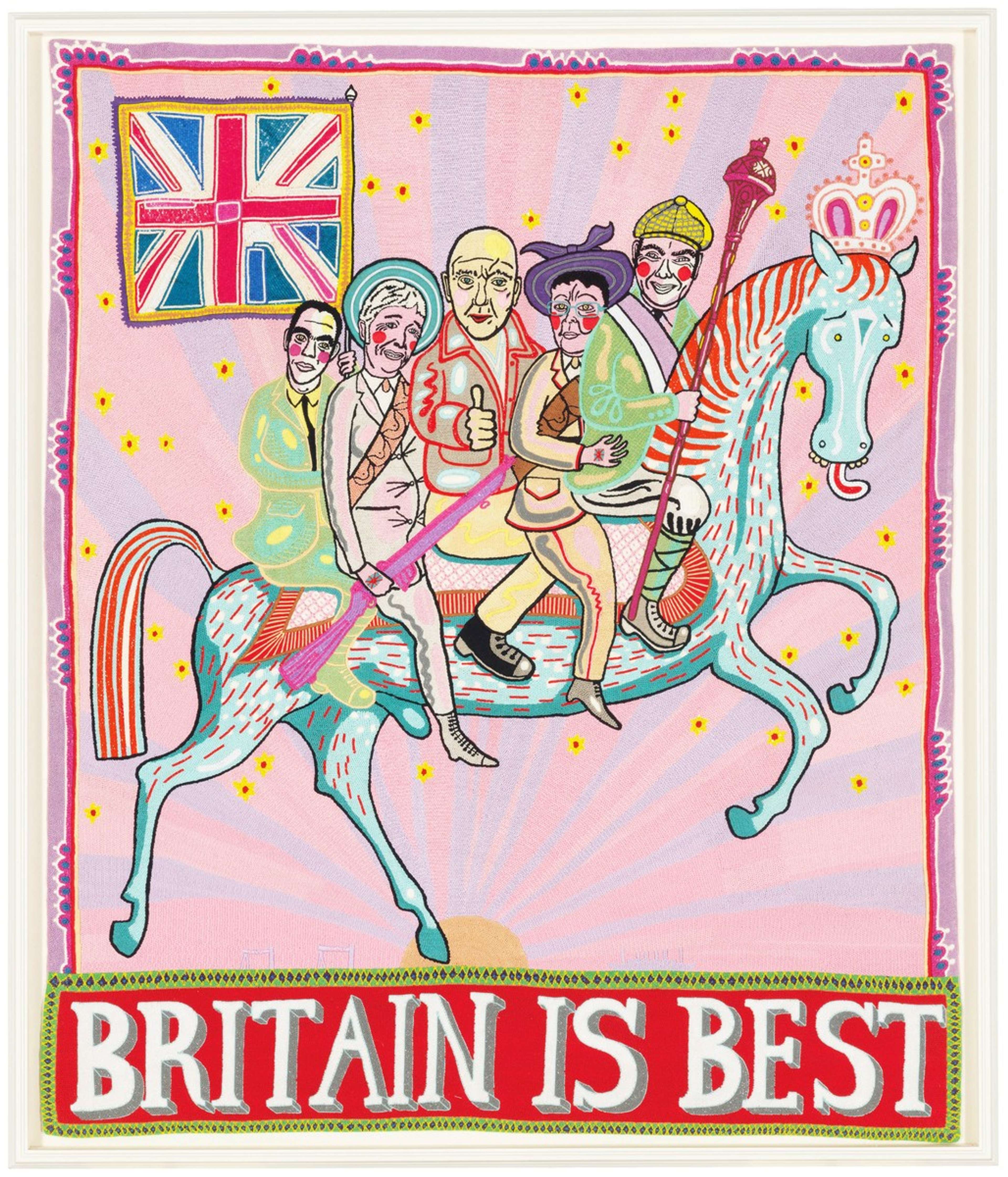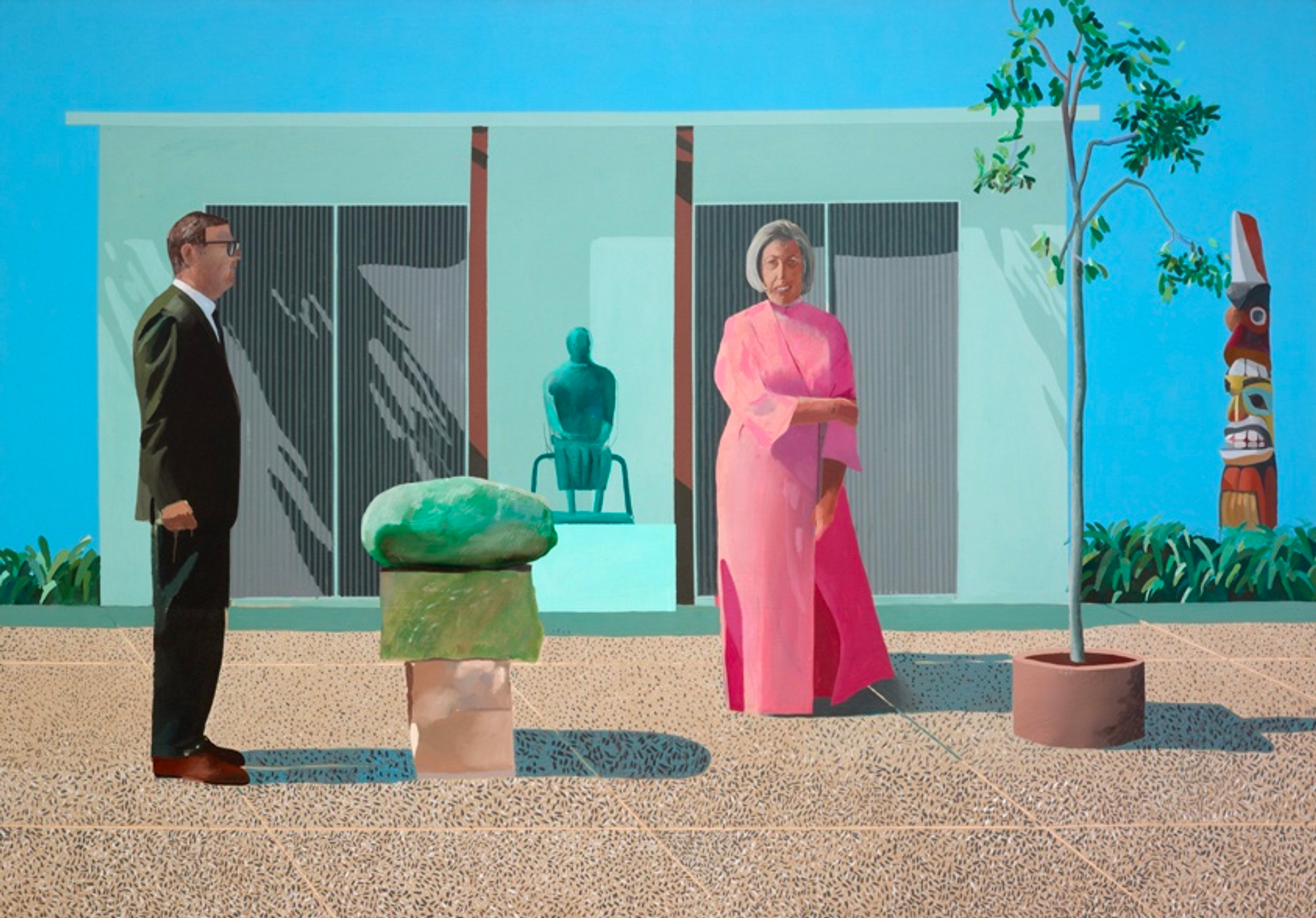 Image © Tate / Floirac © John Piper 1968
Image © Tate / Floirac © John Piper 1968John Piper
101 works
John Piper was one of the most influential British artists of the 20th century, known for his distinctive style that combined elements of abstraction, surrealism, and neo-Romanticism. Over the course of his long and prolific career, Piper worked in a variety of mediums, including painting, printmaking, and stage design, and produced numerous works inspired by his deep Christian faith.
In this article, we'll explore 10 fascinating facts from Piper's early years as a student to his collaborations with other leading artists and designers, as well as his enduring impact on the world of art and culture.
Piper was a keen gardener and nature enthusiast, and often incorporated images of flowers and plants into his artworks.
John Piper's love for nature and gardening had a significant impact on his art, particularly in his later years. He often drew inspiration from his own garden and the natural world around him, incorporating images of flowers, plants, and landscapes into his paintings, prints, and tapestries. Piper's fascination with nature is evident in his use of colour, texture, and form, as well as his attention to detail and the interplay between light and shadow.
In addition to his art, Piper also wrote extensively about gardening and natural history, and designed several gardens throughout his life.
 Image © Tate / Near Newcastle Emlyn Cardigan © John Piper 1968
Image © Tate / Near Newcastle Emlyn Cardigan © John Piper 1968Piper was also a prolific writer and art critic, and he contributed to several publications, including The Spectator, The Listener, and the BBC's The Listener's Guide to Music.
John Piper was not only a talented artist but also a gifted writer and art critic, making significant contributions to the discourse of art criticism during his lifetime. He was a regular contributor to a variety of publications, including The Spectator, The Listener, and the BBC's The Listener's Guide to Music.
Through his writings, Piper shared his insights and opinions on a range of topics, from the works of contemporary artists to the relationship between art and society. His writing style was noted for its clarity and accessibility, making his ideas and perspectives accessible to a wide audience. In addition to his written work, Piper was also a frequent commentator on the arts, appearing on radio and television programs to discuss topics related to art and culture. His work as a writer and critic cemented his reputation as a significant figure in British art of the 20th century.
In addition to his paintings and writing, Piper was also known for his designs for stained-glass windows and tapestries.
John Piper's work as a stained-glass window designer was one of the most significant aspects of his artistic career. He produced a large number of designs for churches across the UK, including the iconic window at Coventry Cathedral, which was destroyed in the bombing during World War II and rebuilt in the 1950s. Piper's stained-glass designs often featured abstract geometric forms and bold, vibrant colours, and he worked closely with master glassmakers to bring his visions to life.
In addition to his work in stained-glass, Piper also designed a number of tapestries, which were produced by skilled weavers using traditional techniques. His tapestries were often inspired by the landscapes and buildings of Britain, and are notable for their vivid colours and intricate patterns. Today, Piper's work can be seen in many public spaces throughout the UK, including churches, schools, and government buildings.
 Image © Sotheby's / Harbour Scene © John Piper 1932
Image © Sotheby's / Harbour Scene © John Piper 1932Piper was a close friend and collaborator of many other famous artists and writers of his time, including Graham Sutherland, Henry Moore, and T.S. Eliot.
John Piper was not only a celebrated artist but also a respected member of the artistic community in Britain. He formed close friendships with many other famous artists and writers of his time, some of whom he collaborated with on various projects. One of his closest companions and fellow British artist was Graham Sutherland, with whom he shared an interest in the English landscape and the revival of neo-Romanticism.
Piper also worked closely with the renowned sculptor Henry Moore, producing several prints based on Moore's sculptures. Additionally, he collaborated with T.S. Eliot, the Nobel Prize-winning poet, on several occasions, including designing the sets for the premiere of Eliot's play "The Family Reunion" in 1939. Piper's collaborations with other artists and writers helped to cement his reputation as a key figure in the cultural landscape of 20th century Britain. Read our Modern British Artist Report to find out more on the current market.
 Image © Tate / Eye And Camera: Marble, Red, Black, Etc. - Lying Figure Reversed © John Piper 1973
Image © Tate / Eye And Camera: Marble, Red, Black, Etc. - Lying Figure Reversed © John Piper 1973In 1972, Piper was elected to the Royal Academy of Arts, one of the highest honours a British artist can receive.
In addition to being elected to the Royal Academy of Arts, John Piper was also awarded several other prestigious honours throughout his career. In 1950, he was made a Commander of the Order of the British Empire (CBE) for his contributions to British art. He was later awarded a knighthood in 1972, shortly after his election to the Royal Academy, and in 1984 he was made a Companion of Honour, an even rarer distinction reserved for those who have made a significant contribution to the arts, literature, science, or politics.
 Image © Tate / Eye And Camera: Yellow And Green © John Piper 1967
Image © Tate / Eye And Camera: Yellow And Green © John Piper 1967Piper's work has been the subject of several major retrospectives, including exhibitions at the Tate Gallery in London and the Museum of Modern Art in New York.
John Piper's extensive body of work has been celebrated in several major retrospectives, cementing his place as one of the most important British artists of the 20th century. The Tate Gallery in London held a retrospective of his work in 1983, which coincided with the award of the Order of Merit by Queen Elizabeth II.
In 1992, the Museum of Modern Art in New York held a major retrospective of Piper's work, which was accompanied by a comprehensive catalogue of his paintings, prints, and designs. This exhibition helped introduce Piper's work to wider audience's in the United States and solidified his reputation as a major figure in modern art. Piper's work continues to be the subject of exhibitions and retrospectives around the world, ensuring that his legacy will endure for generations to come.
 Image © Tate / Eye And Camera © John Piper 1983
Image © Tate / Eye And Camera © John Piper 1983Piper was also an avid collector of folk art and artefacts, and his collection was eventually donated to The British Museum.
John Piper was known not only for his own artistic works, but also for his extensive collection of folk art and artefacts. His interest in these objects was sparked by his travels around the world and his fascination with different cultures and traditions. Piper's collection included a wide variety of items, such as African masks, mediaeval English tiles, and Indian textiles.
Throughout his life, Piper continued to add to his collection, and by the time of his death in 1992, it contained over 1,500 items. In accordance with Piper's wishes, the entire collection was donated to The British Museum, where it is now held in the Department of Ethnography.
 Image © Tate / Eye and Camera: Blue to Ochre © John Piper 1977
Image © Tate / Eye and Camera: Blue to Ochre © John Piper 1977Piper was a skilled photographer and took thousands of photographs throughout his life, many of which were used as inspiration for his artwork.
John Piper was not only a versatile artist but also an avid photographer. He used photography as a tool to document the world around him and as a source of inspiration for his art. Piper was known to take thousands of photographs throughout his life, capturing landscapes, buildings, and other scenes that caught his eye. He often used these photographs as a reference for his paintings, prints, and collages, incorporating elements of the photographs into his compositions or using them as a starting point for his creative process. Piper's photographs also offer a fascinating glimpse into the changing landscapes and architecture of England over the course of the 20th century.
 Image © Tate / Eye and Camera: Flame Four © John Piper 1967
Image © Tate / Eye and Camera: Flame Four © John Piper 1967Piper was a committed Christian and his faith had a significant impact on his work.
John Piper's Christian faith was a major influence on his artistic output. He believed that art had the power to communicate spiritual truths and to inspire contemplation and reflection. Piper produced a number of series of paintings based on biblical themes, including the Baptistry Windows at Coventry Cathedral, which depict scenes from the Book of Revelation. He also designed stained glass windows for many churches, including the Chapel of Robinson College, Cambridge, and the Chapel of Oundle School.
Piper's use of bright colours and abstract forms in these works was intended to convey the transcendental nature of the divine and to create a sense of wonder and awe in the viewer. In addition to his work as an artist, Piper also wrote extensively on Christian themes, and his writings and artwork continue to inspire and challenge viewers to this day.
 Image © Tate / Covehithe Church © John Piper 1983
Image © Tate / Covehithe Church © John Piper 1983Piper was a close friend and collaborator with the poet John Betjeman. The two men worked together on several projects, including the Shell Guides, a series of travel guides to Britain.
John Piper and John Betjeman, English poet and writer, were close contemporaries and collaborators who shared a passion for English culture and heritage. Their most significant collaboration was on the Shell Guides, a series of travel guides to Britain commissioned by the oil company Shell during the 1930s and 1940s. Piper provided the illustrations and design for the guides, while Betjeman contributed the text. The guides were a huge success and played an important role in promoting the idea of “heritage tourism’’ in Britain. Piper and Betjeman worked together on other projects, including a book on the architecture of Oxford, and their partnership helped to shape the cultural landscape of post-war Britain.






